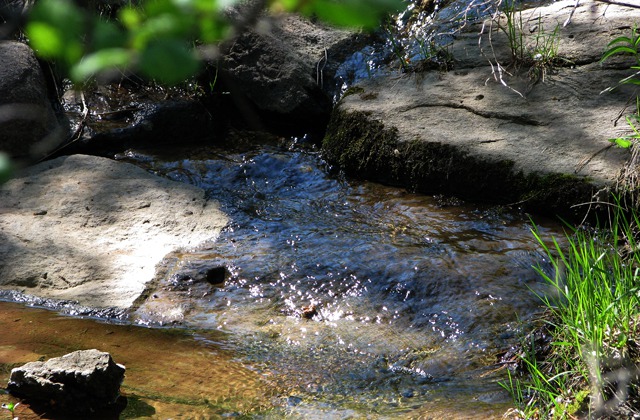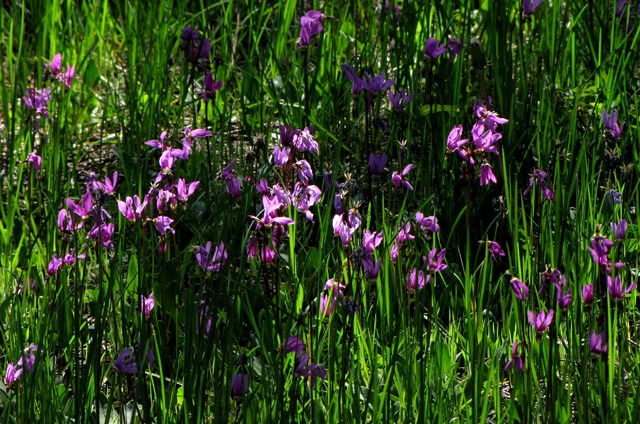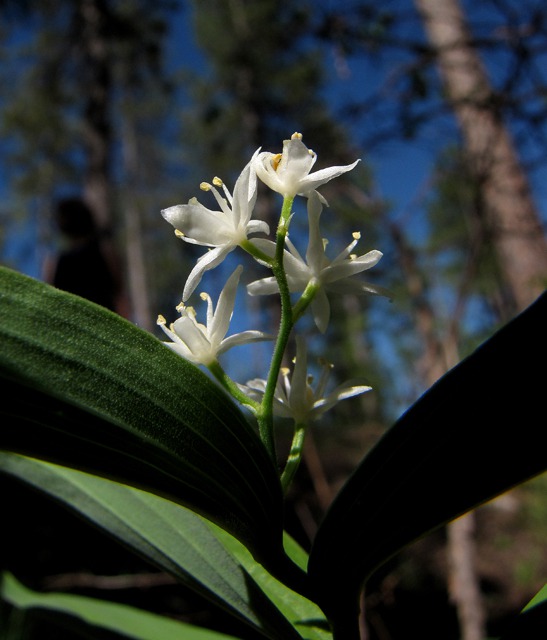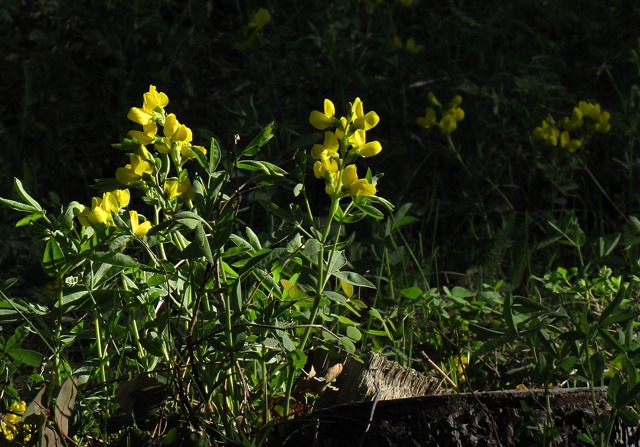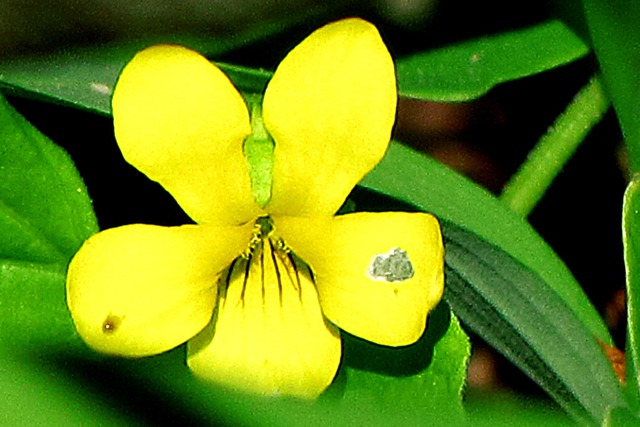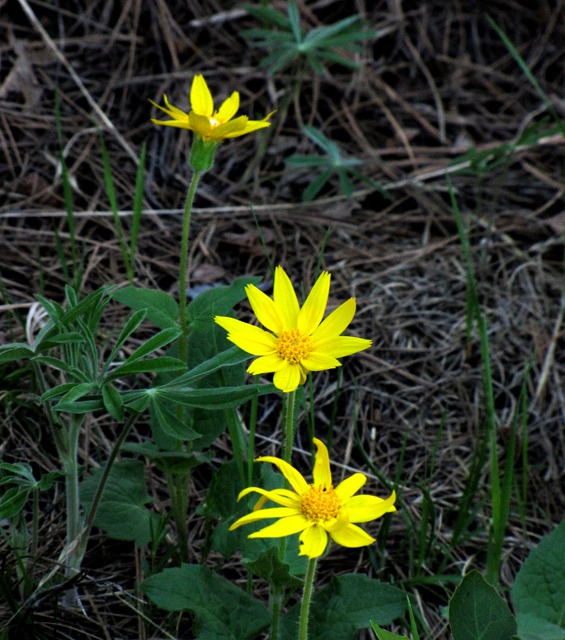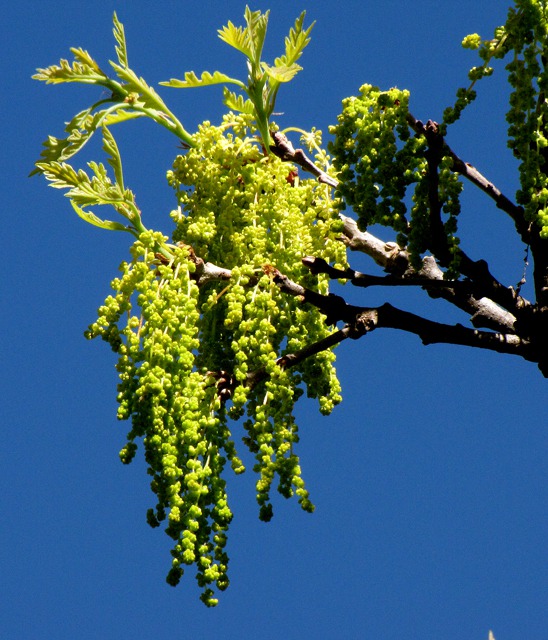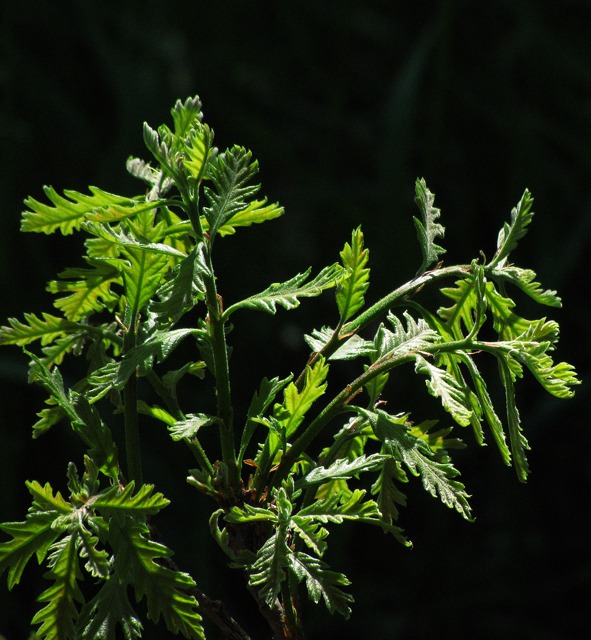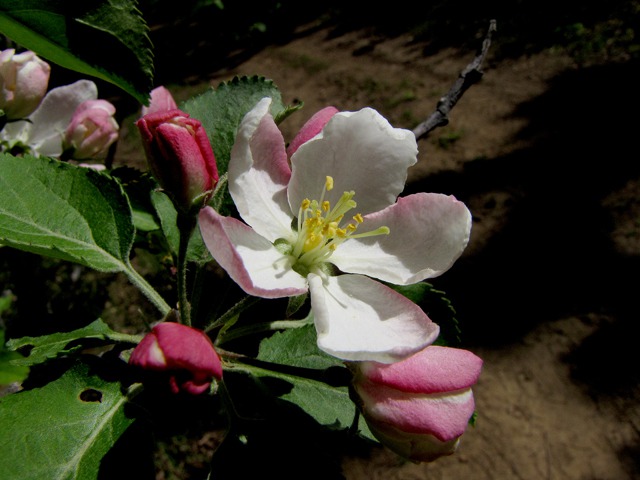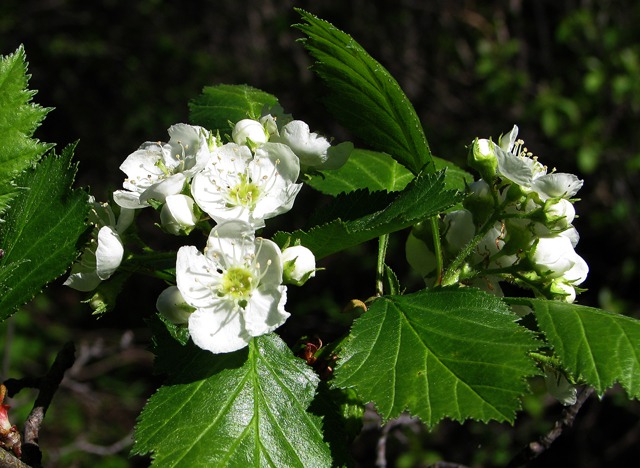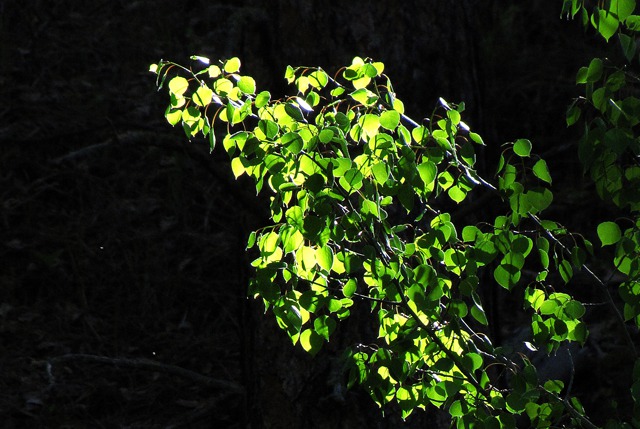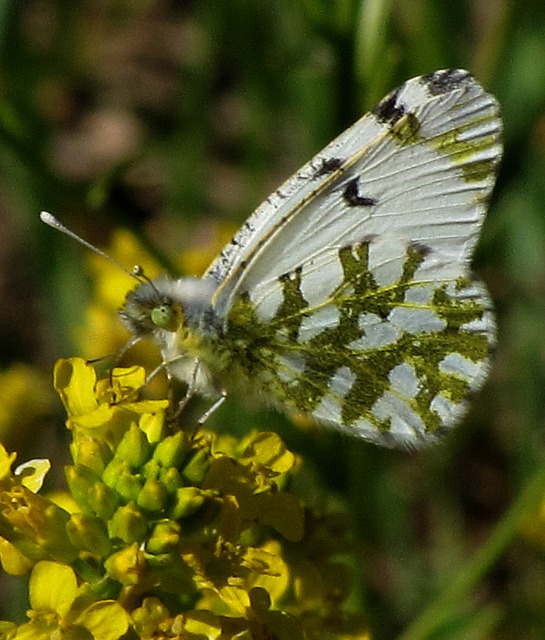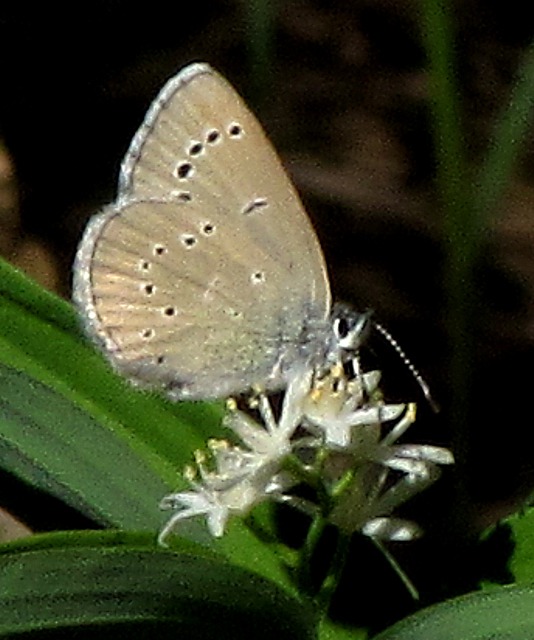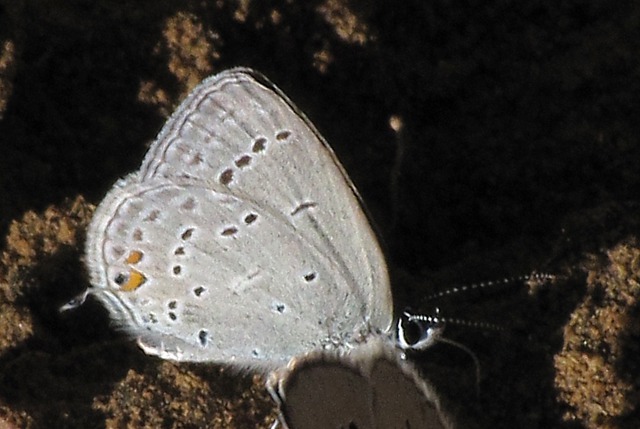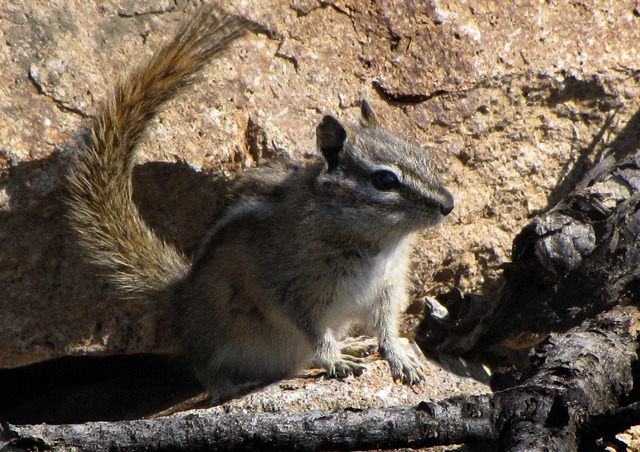Moisture Returns: The rains/snow have returned to South Dakota after ten years of severe drought. Now that we've had a huge blizzard followed by a wet summer followed by another blizzard-laden winter, the plants are in their glory. They're perfectly adapted to endure dry years and grow explosively during wet times.
So this day we were enjoying the show on Black Hills National Forest Road 170 at Vanocker Creek.
These plants are all at home in the moister, slightly more acidic soils of forest edges and creek banks. Use these for a partial shade garden in good garden soil with adequate moisture. All are available in nurseries or through native plant restoration catalogs. This little clearing along Vanocker Creek is as perfect a woodland, partial shade garden, as you could ever find!
Why native plants? Because they are perfectly adapted to your soil and climate wherever that may be. Because they provide food, cover, nesting materials, and shelter for the birds, butterflies, and other wildlife that live in your area. Because they don't require special care such as extra water, fertilizer, insecticides, and extensive soil amendments -- saving precious resources and eliminating harmful chemicals from the environment.
And because they're beautiful!
The Flowers We Saw: The flowers of spring provide nectar and pollen for butterflies and bees and butterfly larval (caterpillar) food:
Oregon Grape (Mahonia repens) is a low growing, spreading ground cover with holly-like leaves. The leaves are evergreen and turn brilliant red with age. These bright yellow flowers are followed by dusty blue berries. The berries provide food for a wide variety of animals and birds. Oregon grape is abundant in the Black Hills in rocky areas with adequate moisture and good winter snow cover.
Darkthroat Shooting Stars (Dodecatheon pulchellum) bloom in May and form large colonies in open pine or mixed forest, clearings, limestone glades, and moist grassland. The magenta color glows in the spring sun, marking the end of winter.
Starry False Solomon's Seal (Smilacina stellata) thrives in deep shade, forming colonies of graceful lance-shaped leaves topped with starry white flowers. The flowers are followed by reddish-purple berries eaten by deer and birds.
Iris (Iris missouriensis) Here's the perfect deer-resistant spring flower. In May, meadows are filled with these pale bluish-purple flowers in clumps of lance-like leaves.
Golden Pea (Thermopsis rhombifolia) Brilliant yellow sweet pea-like flowers are among the first blooms of spring.
Violets like this Yellow Wood Violet (Viola pubescens) provide larval food for fritillary butterflies of which there are fifteen species in South Dakota. These brilliant orange spotted butterflies fill the Hills in late summer.
Sunflowers in the spring? Yes, when the flower is Arrowleaf Balsamroot (Balsamorhiza sagittata)! These large clumps fill open forest meadows in spring from British Columbia to California. Birds and small mammals like the seeds, and you'll love the color.
Shrubs and Small Trees We Encountered: They provide shelter and cover for birds, larval food for butterflies, and definition for your garden landscape:
Mountain Ninebark (Physocarpus monogynus) is a bushy shrub about three feet high. Clusters of white flowers cover the plant in spring. In the Black Hills the shrub commonly grows in rocky woods. The name refers to the fact that old bark is continually shed in thin papery shreds, exposing a new layer each time.
Bur Oak (Quercus macrocarpa) is the only native oak in the Hills. A gnarly, slow growing tree, the oak is one of the last trees to leaf out in spring. In good wet years, the oaks produce acorns, a great feast for squirrels, deer, turkeys, blue jays and other birds. A few years ago, I heard Clark's Nutcrackers carousing in the oaks along Victoria Creek -- not a common bird out here, but the acorns were good that year!
Apple (Malus) How did this common domestic apple tree get out here? Who knows? The blossoms are lovely, and the apples will provide a treat for wildlife this fall.
Northern Hawthorne (Crataegus chrysocarpa) I absolutely love this little tree in the landscape! It grows about twelve feet high and is very gnarly with thorns. The clusters of white flowers are followed by large, shiny red berries similar to a rose hip. The thicket-like growth provides cover and shelter for birds and animals. Grouse, fox, rabbits, and pheasants also feed under the tree.
One caveat -- hawthorne is susceptible to fire blight, a disease that causes the leaves to wilt, turn brown and die. These hardy natives will return in the spring with no ill effects, but the disease is easily transferred to apples and other domestic trees. There is no treatment other than immediate removal of the affected branches. Nursery varieties are available without thorns.
Aspen (Populus tremuloides) This lovely, graceful tree with its gleaming white bark dominates the high limestone areas of the northwestern Black Hills. It provides important browse for deer and elk in winter and is the larval food source for swallowtail, viceroy, admiral, and mourning cloak butterflies. In spring, the opening leaves are this bright lime color. They darken to deep green and then turn yellow and orange in fall. The tree suckers aggressively but is easily controlled by simply cutting the shoots. When the wind blows, which in South Dakota is all the time, the leaves rustle and chatter. That's because the stems are square and present resistance to the breezes.
Saskatoon Serviceberry (Amelanchier alnifolia) Every woodland garden must have a serviceberry! The shrub is about three feet high and forms thickets as the gardener allows. White spring flowers emerge before the leaves in very early spring. Hence the tale of the name -- the blooms were used at pioneer funeral services in early spring when the soil had thawed enough for burials. Deep blue fruit follows in June; the berries are sweet and juicy, and you'll have to race the birds for them! The shrub is a very important food source for wildlife. The leaves turn red-orange in fall.
Chokecherry (Prunus virginiana) Another thicket-forming shrub or small tree, this plant grows to eighteen feet high. Spikes of white flowers bloom in May followed by deep purple fruit in August. The fruit is bitter but makes excellent jelly and syrup. Again, you'll have to race the birds for the fruit. The leaves provide red and orange color in fall.
Butterflies are one of the best rewards for the native gardener:
This Large Marble (Euchloe ausonides palaeoreios) is feasting on the nectar of Yellow Rocket (Barbarea vulgaris) at Park Creek. This butterfly uses mustards like yellow rocket and rockcresses as larval (caterpillar) food. The adults favor nectar from mustards. They overwinter as a chrysalis.
Silvery Blue Butterfly (Glaucopsyche lygdamus oro) feeding on a starry false Solomon's seal. This little guy has a wing span of about one inch and the tops of his wings are iridescent silvery blue. Larval food is legumes like lupine, and adults take nectar from chokecherry and other flowers. The males gather in mud puddles to drink. They're barely noticeable with their wings closed but make an amazingly beautiful sight when they all fly up at your feet. They overwinter as a chrysalis.
Grey Hairstreak Butterflies (Strymon melinus franki) use a variety of plants such as lupine and clover for larval food. Adults feed on flower nectar, and, like the Silvery Blues, the males gather in mud puddles to drink. The butterfly overwinters as a chrysalis.
And this little chipmunk surveys his entire kingdom of wildflowers, shrubs, and trees, For him, they represent food, shelter, and cover -- everything he needs in life.
Louise with photos by Brian and Louise. Text and Photos Copyright GoinMobyle, LLC, 2009


